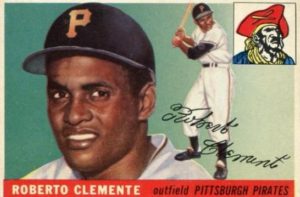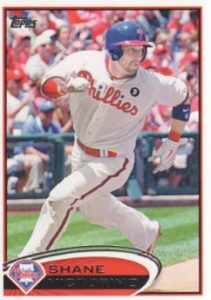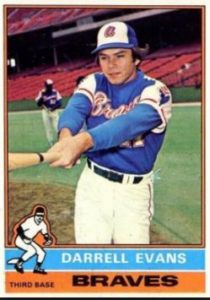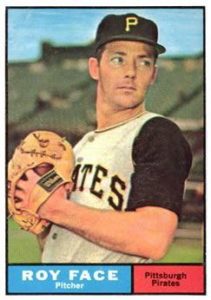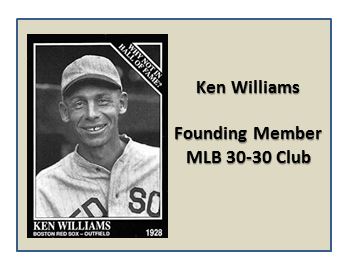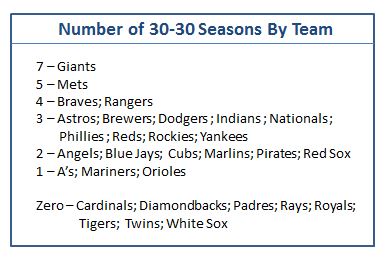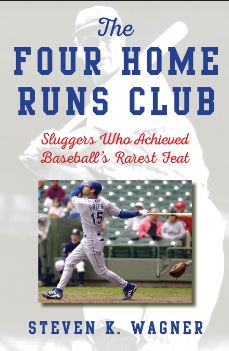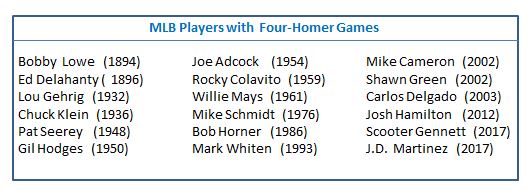In 1987, the MLB Rookie of the Year Award was renamed the Jackie Robinson Award – forty years after Robinson was credited with breaking the major league color line and was the first winner of the national Rookie of the Year honor. In this post, BBRT will take a look at the player – Giants’ pitcher Larry Jansen – who made sure Robinson’s ROY win was no walk in the park. Jansen went 21-5 that season – received 13 first place votes to Robinson’s 15 and 105 total points to Robinson’s 129.
Let’s take a look at the two players who led the balloting for that first national ROY Award – and also finished fifth (Robinson) and seventh (Jansen) in the NL Most Valuable Player voting.
In his rookie campaign, the 28-year-old Robinson – playing first base – appeared in 151 games for the Brooklyn Dodgers, hitting .297, with 12 home runs, 48 RBI, 125 runs scored (second in the NL), a league-leading 29 stolen bases and a league-topping 28 sacrifice bunts. Robinson collected 175 hits (ninth in the NL) and 31 doubles (sixth). And, he did all this under the pressure of “breaking the MLB color line.” The season before his rookie MLB campaign, Robinson hit .349, with three home runs, 66 RBI, 113 runs scored and 40 stolen bases for the Triple A (International League) Montreal Expos. His .349 average led the IL and he was named the league’s Most Valuable Player.
Jansen came to the major leagues with minor league credentials that were just as spectacular as Robinson’s (if not more so). The year before his MLB debut, Jansen took the mound for the San Francisco Seals of the Triple A Pacific Coast League, where he won a league-high 30 games (against just six losses), with a PCL-lowest 1.57 earned run average, a league-best .833 won-lost percentage, a league-high 31 complete games (38 starts) and a PCL-topping 321 innings pitched.
In 1997, Larry Jansen (along with co-author George Jansen- not related), published “The Craft of Pitching” … a well-thought out, well-researched and well-illustrated look at the mental and physical aspects (from preparation to execution) of effective mound work.
In 1947, the 26-year-old righty made his MLB debut for the New York Giants and proved his stellar Triple A numbers were no fluke. He won 21 games (second only to the 22 of the Reds’ Ewell Blackwell), while losing just five – for an NL-best .808 won-lost percentage. Jansen’s 20 complete games were the NL’s fourth-most and his 248 innings pitched the fifth-highest in the senior circuit. In addition, his 1.202 WHIP (walks and hits per innings pitched) was the league’s fifth-best; his 2.069 walks per nine innings the league’s lowest; and his 104 strikeouts eighth. Jansen clearly gave Robinson a run for his money when it came to that first-ever national Rookie of the Year honor.
We all know Robinson went on to a ten-season Hall of Fame career – making six All Star teams, winning the 1949 NL Most Valuable Player Award and capturing one batting title and two stolen base crowns. He finished with a .311 career batting average, 137 home runs, 734 RBI, and 947 runs scored – and a place in baseball history.
Jansen, while he didn’t make the Hall of Fame, did pretty well himself. He had a nine-year MLB career – during which he won 20+ games twice (leading the NL with 23 wins in 1951), 19 once and 18 once. The two–time All Star also led the NL in shutouts (five in 1950) and in strikeouts-to-walks ratio in 1950 and 1951. His final stat line was 122-89, 3.58.
In the 1950 All Star game, won by the NL 4-3 in 14 innings, Larry Jansen pitched five innings of one-hit shutout ball (no walks, six strikeouts).
Robinson and Jansen shared the stage for one of the most memorable games in MLB history. When the Giants won the 1951 pennant on the strength of Bobby Thomson’s walk-off, play-off home run – immortalized as “The Shot Heard Round the World” – Robinson was in the lineup at second base for the losing Dodgers, while Jansen came on in relief of Sal Maglie and got the win for the World Series-bound Giants.
Notably, Jansen played a major role in getting the Giants to that three-game playoff for the NL title. On August 12, the Giants were 61-51, 12 ½ games behind the Dodgers. From that point on, the Giants went 37-8 (including 2-1 in the three-game playoff) and Jansen went 9-2 (12 games/10 starts) with a 2.00 ERA. That season, Jansen tied for the NL lead in wins (23), was fifth in earned run average (3.04), fourth in strikeouts (145), sixth in both games started (34) and complete games (18), seventh in shutouts (3) third in WHIP (1.112) and first in strikeouts-to-walks ratio (2.589).
At the close of the 1951 season, Jansen looked to be on the way to a Hall of Fame career. He had 96 wins (57 losses) and a 3.33 earned run average in just five big league campaigns. However, chronic back issues (that surfaced late in the 1951 season and contributed to arm problems going forward) were taking their toll and Jansen pitched just four more seasons – going 26-32, 4.38 in that span.
Jansen also enjoyed a successful career as a pitching coach, including five seasons in the Pacific Coast League, eleven seasons with the San Francisco Giants and two with the Chicago Cubs. Jansen passed away on October 10, 2009 (at the age of 89) due to congestive heart failure.
Before the national Rookie of the Year honor, there was …
From 1940 to 1946 the Chicago Chapter of the Baseball Writers Association selected an MLB Rookie of the Year. In 1947. the voting was expanded to all members of the BBWAA and the national Rookie of the Year Award (then called the J. Louis Comiskey Memorial Award) was born.
Winners of the Chicago Chapter ROY Honor
1940, Lou Boudreau, Indians, SS (age 22) … .295-9-101, with 97 runs scored in 155 games.
1941 Pete Reiser, Dodgers, OF (age 22) … a league-leading .343 average, 14 home runs and 76 RBI in 137 games. That season Reiser also led the NL in runs scored (117), doubles (39), triples (17), total bases (299) and hit-by-pitch (11).
1942 … Johnny Beazley, Cardinals, RHP (age 24) …. 21-6, 2.13 in 43 appearances. Beazley completed 13 of 23 starts, pitched 215 1/3 innings and fanned 91 batters.
1943 … Billy Johnson, Yankees, 3B (age 24) … .280-5-94 in 155 games. Johnson also scored 70 runs.
1944 … Bill Voiselle, Giants, RHP (age 25) … 21-16, 3.02. Johnson led the NL in games started (41), innings pitched (312 2/3) and strikeouts 161; while completing 25 games.
1945 … Dave Ferriss, Red Sox RHP (age 23) … 21-10, 2.96 in 35 appearances. Ferriss completed 26 of 31 starts and threw five complete-game shutouts.
1946 … Eddie Waitkus, Cubs, 1B (age 26) … .304-4-55 in 113 games; also known as one of the best fielding first baseman of his time.
Primary Resources: Baseball-Reference.com; MLB.com; Society for American Baseball Research.
BASEBALL ROUNDTABLE MAKES TOP 100 BASEBALL BLOG LIST
 Baseball Roundtable has made the Feedspot list of the Top 1oo Baseball Blogs. To see the full list, click here.
Baseball Roundtable has made the Feedspot list of the Top 1oo Baseball Blogs. To see the full list, click here.
I tweet baseball @DavidBBRT
Follow/Like Baseball Roundtable’s Facebook Page here. More baseball commentary; blog post notifications; PRIZES.
Member: Society for American Baseball Research (SABR); The Baseball Reliquary; The Negro Leagues Baseball Museum.

